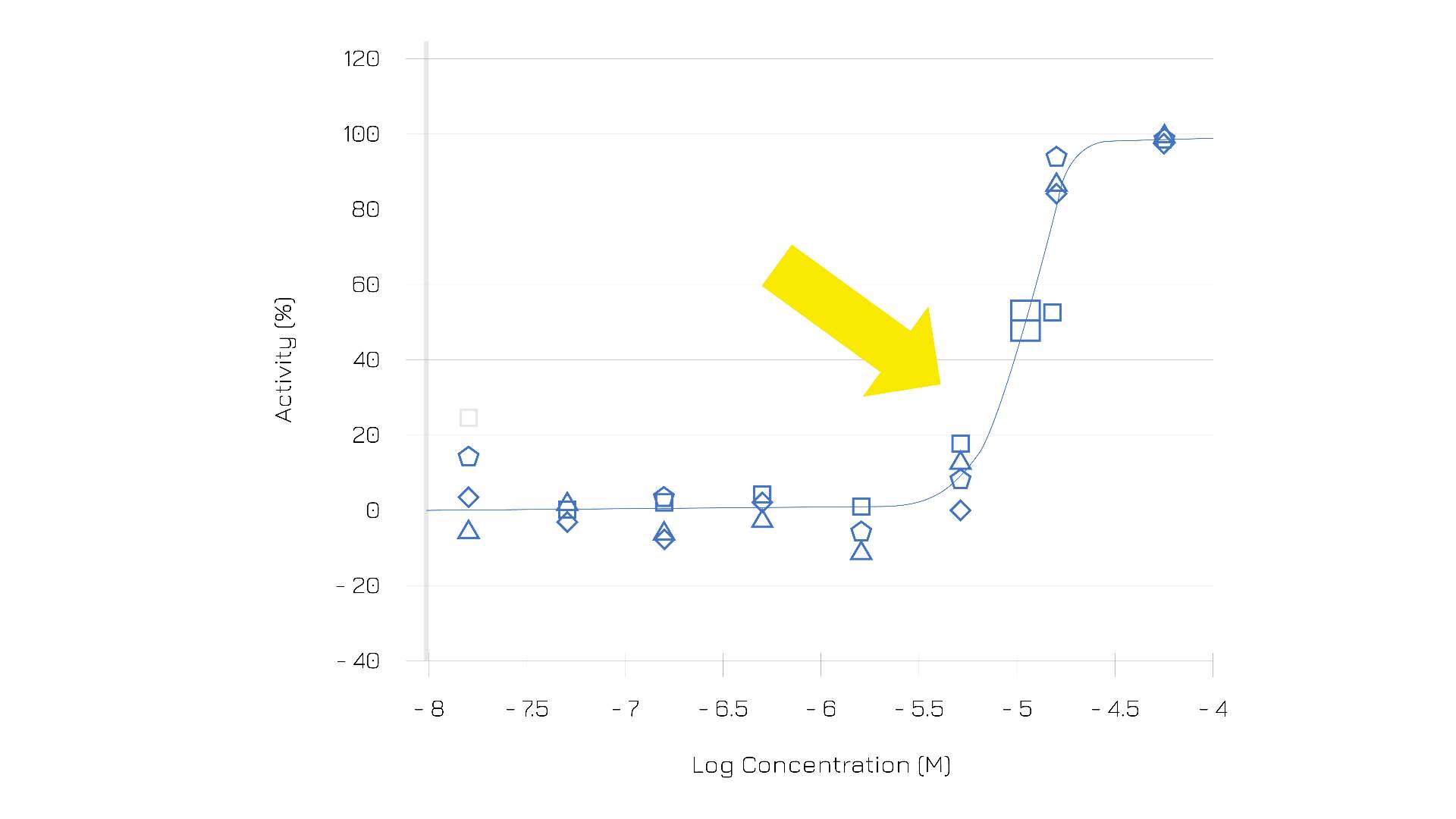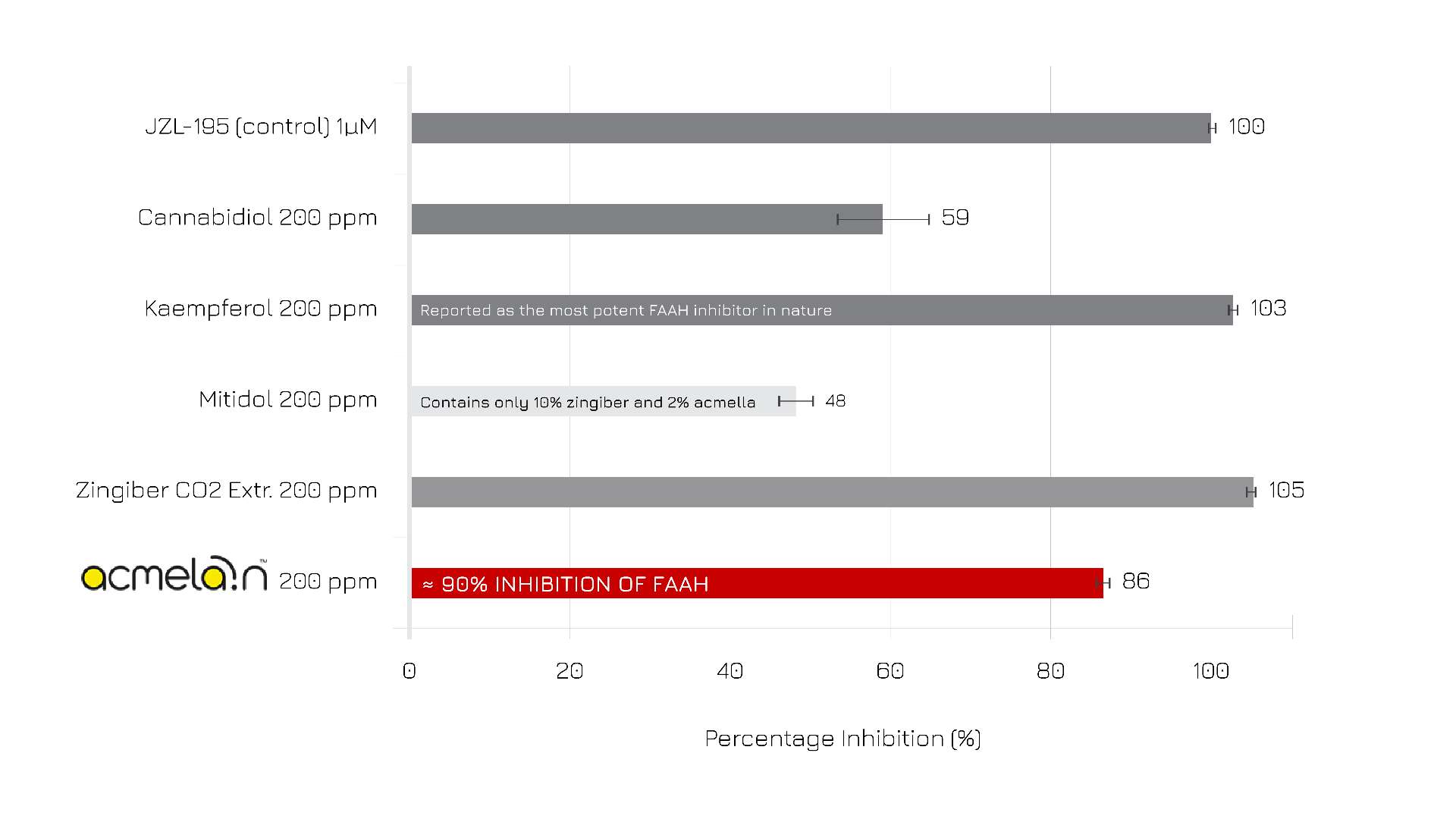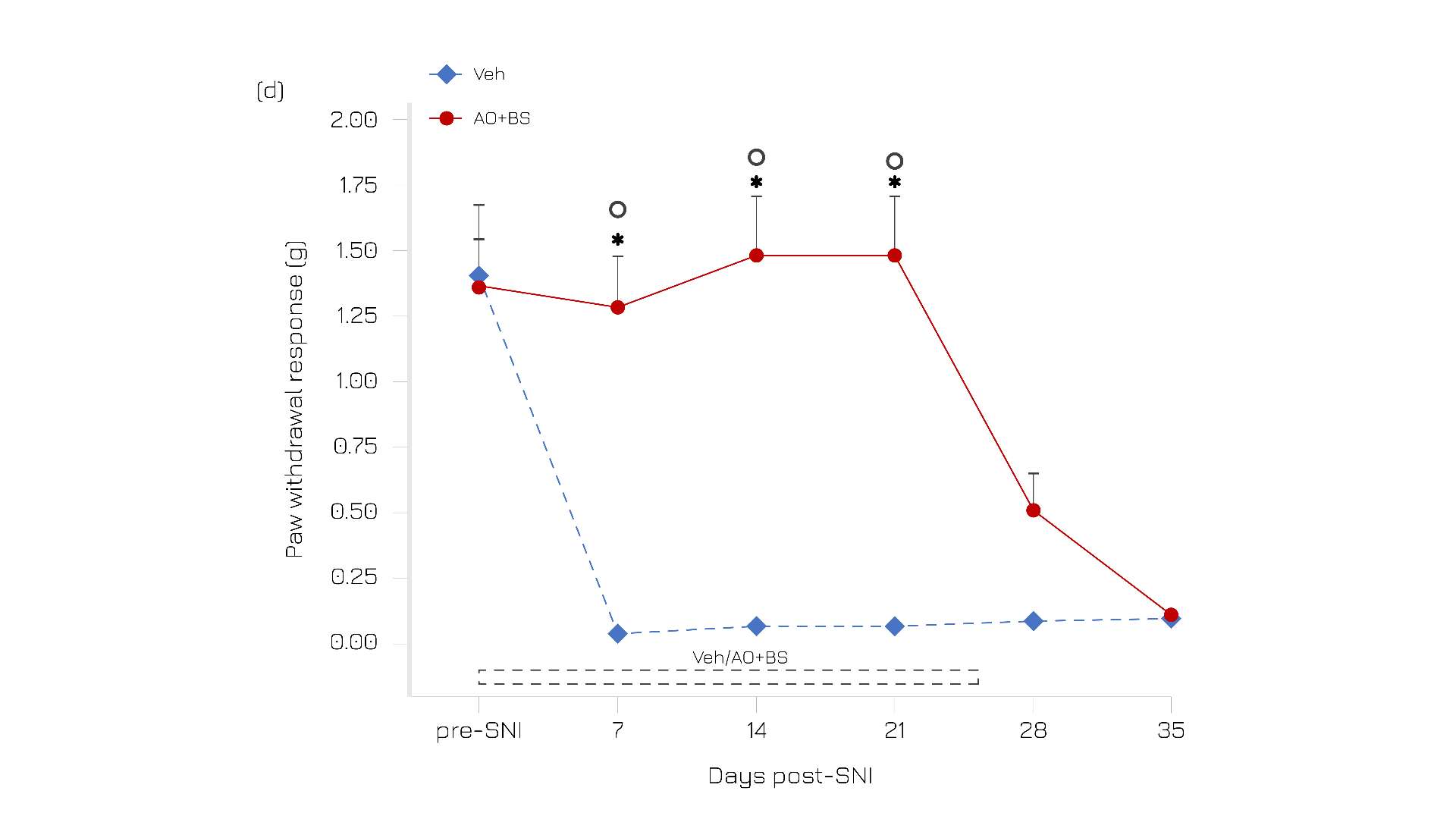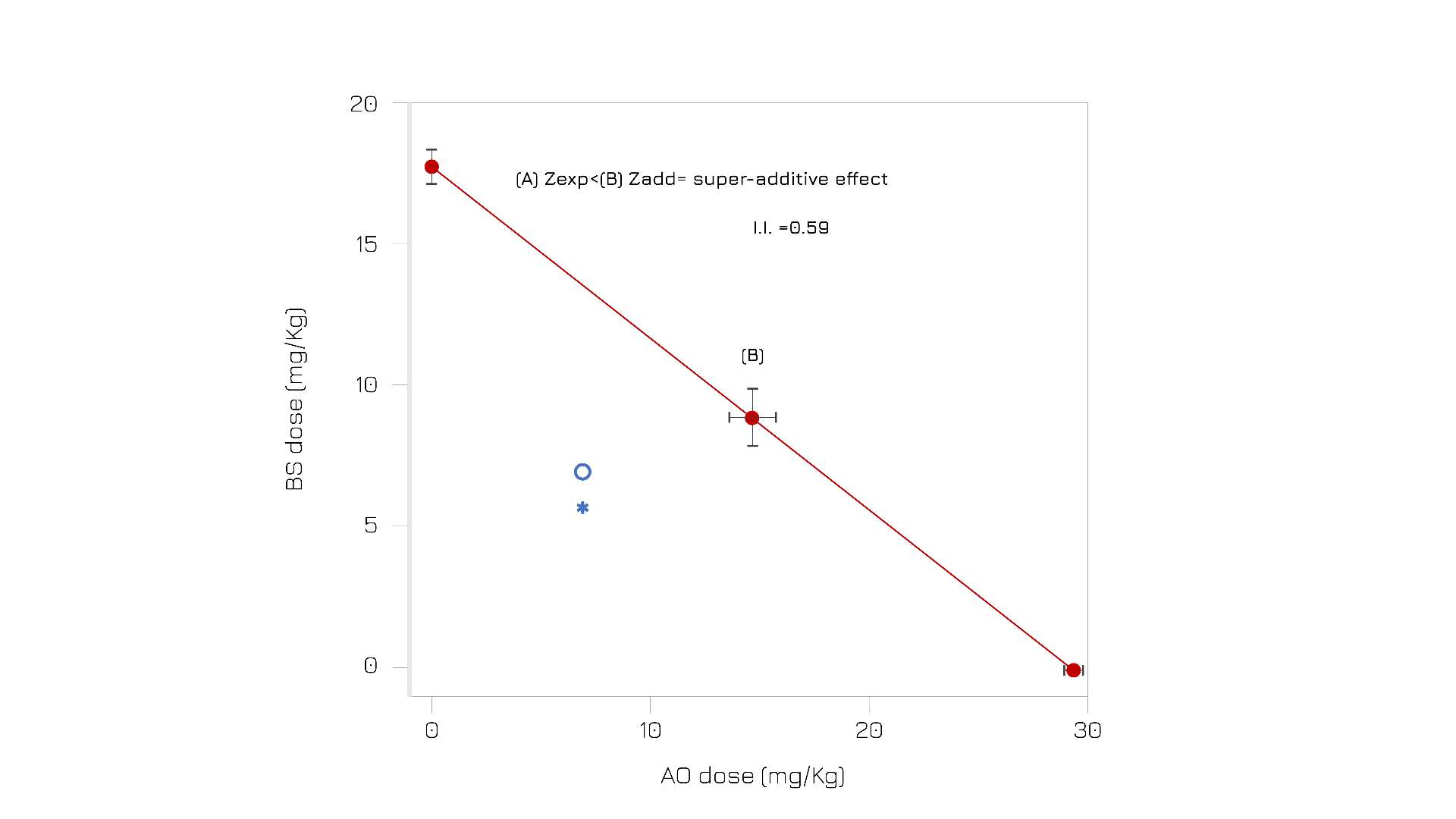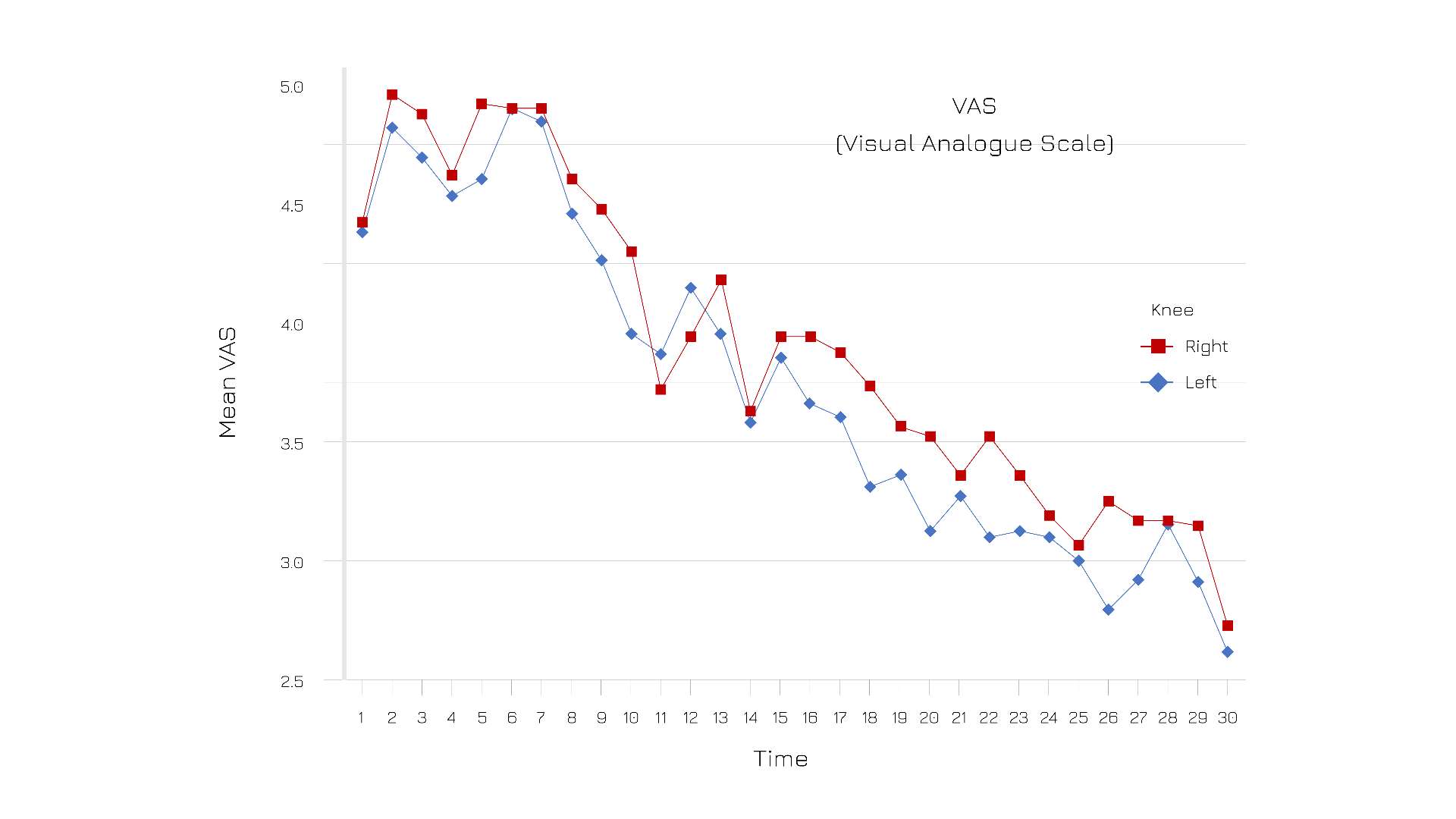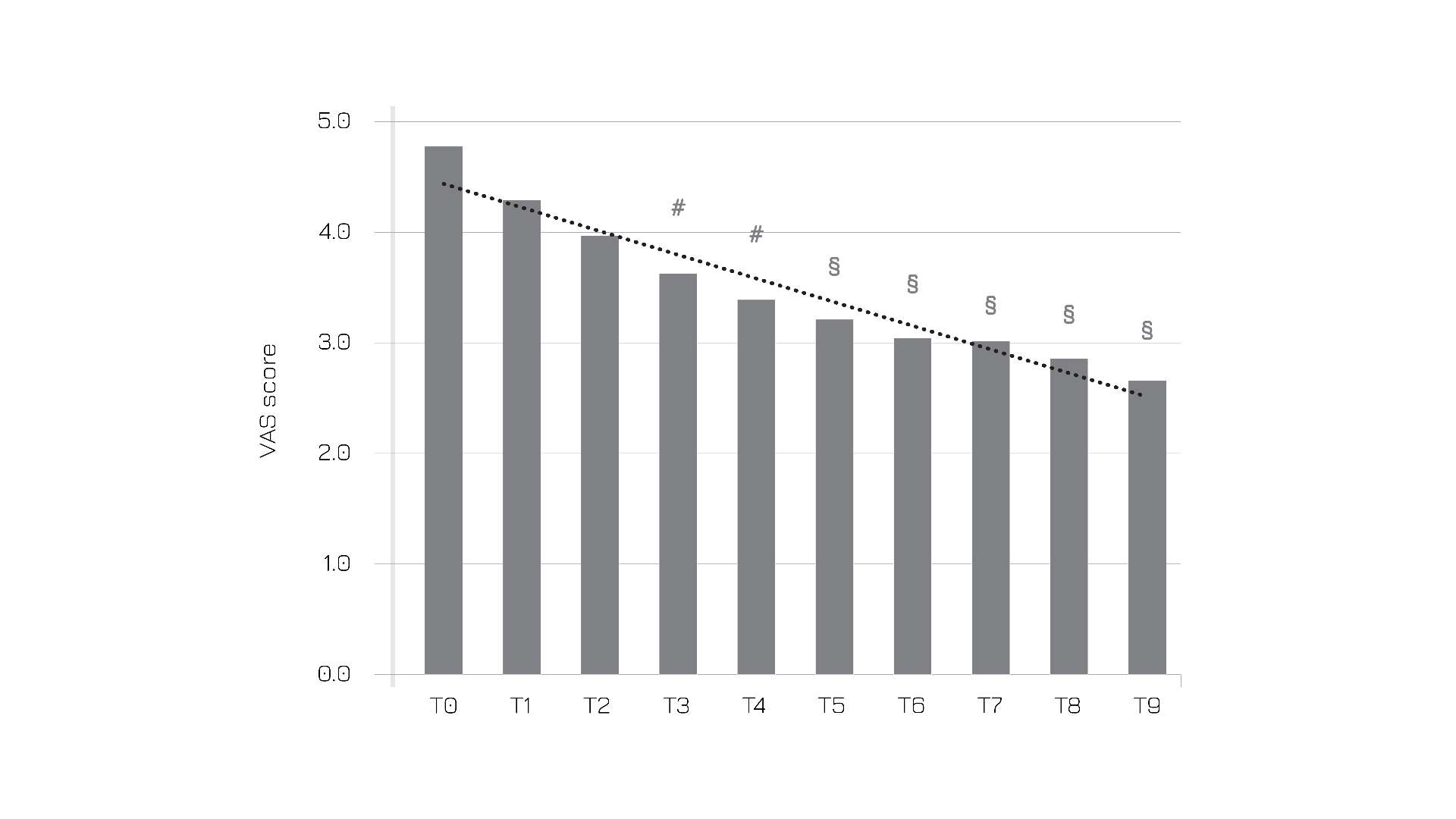Acmelain™
Browse all Indena’s documents about products, events, company information and so much more.
Go to sectionPeer-reviewed science on Acmelain™
The endocannabinoid system is involved in physiological mechanisms related to pain management and relief. Among the key contributors to this pathway, the CB2 receptor and FAAH enzymes are notably influential.1
Currently, two in vitro assays have already verified the effect of Acmelain™ on the endocannabinoid system, particularly investigating the interaction with the two pivotal actors mentioned above.1
As summarized in the two plot charts below (Figures 1 and 2), the acmella extract is able to positively interact with CB2, and to inhibit the action of FAAH.1
Figure 1: Dose-response curve – Acmella extract on CB2 receptors.1
Figure 2: Percentage of inhibition on FAAH, comparing acmella extract and other botanical ingredients.1
One of the latest studies on the acmella extract run by Indena has shown, once more, its potential when co-administered with other botanical ingredients. In this case, in vivo tests on neuropathic pain preclinical models (rats) allowed to demonstrate that Acmelain™ has a synergistic effect when used in combination with Boswella serrata. As emerges from the results below (Figures 3 and 4), rats that were treated with both natural extracts benefited from a greater reduction in neuropathic pain.2
Figure 3: Paw withdrawal response in control and treated populations.2
Figure 4: Isobolographic representation of the interaction between acmella and boswellia extracts in combination.2
A one-month study involving 50 subjects showed that the co-administration of Acmella oleracea extract and Zingiber officinalis extract can be effective in supporting knee functionality and comfort.3
The contrast of knee discomfort, as measured using the Visual Analogue Scale (VAS), was particularly noteworthy. This improvement was observed early on, starting after just 2 days and peaking after 7 days: a remarkable effect for a health food ingredient (Figure 5).3
Figure 5: VAS variation on left and right knee during 30 days of treatment.3
Evidence of the promising adjuvant activity of Acmelain™ also emerges from another human study, which involved 48 subjects with chronic pain already undergoing therapy with medical cannabis. The acmella extract was used in combination with Coenzyme Q10 (Ubiqsome™ - Coenzyme Q10 Indena Phytosome™) and Zingiber officinalis extract in addition to conventional treatments. In this case, 70.8% of participants reported a statistically significant beneficial effect, as measured using the VAS method (Figure 6).4
Figure 6: VAS variation at different points in time.4
BIBLIOGRAPHY
1Petrangolini G. et al., J Nutr Food Sci, 10:766 (2023).
2Boccella S. et al., Phytotherapy research, 1:4 (2023).
3Rondanelli M. et al., Journal of Pain Research, 13:761 (2020).
4Poli P. et al., Evidence-based complementary and alternative Medicine, (2022).
Sorry, our website doesn't support IE11 and older versions
For a better experience try a modern browser:
This is a private file, to request the download of this resource, please fullfill the fields below.
